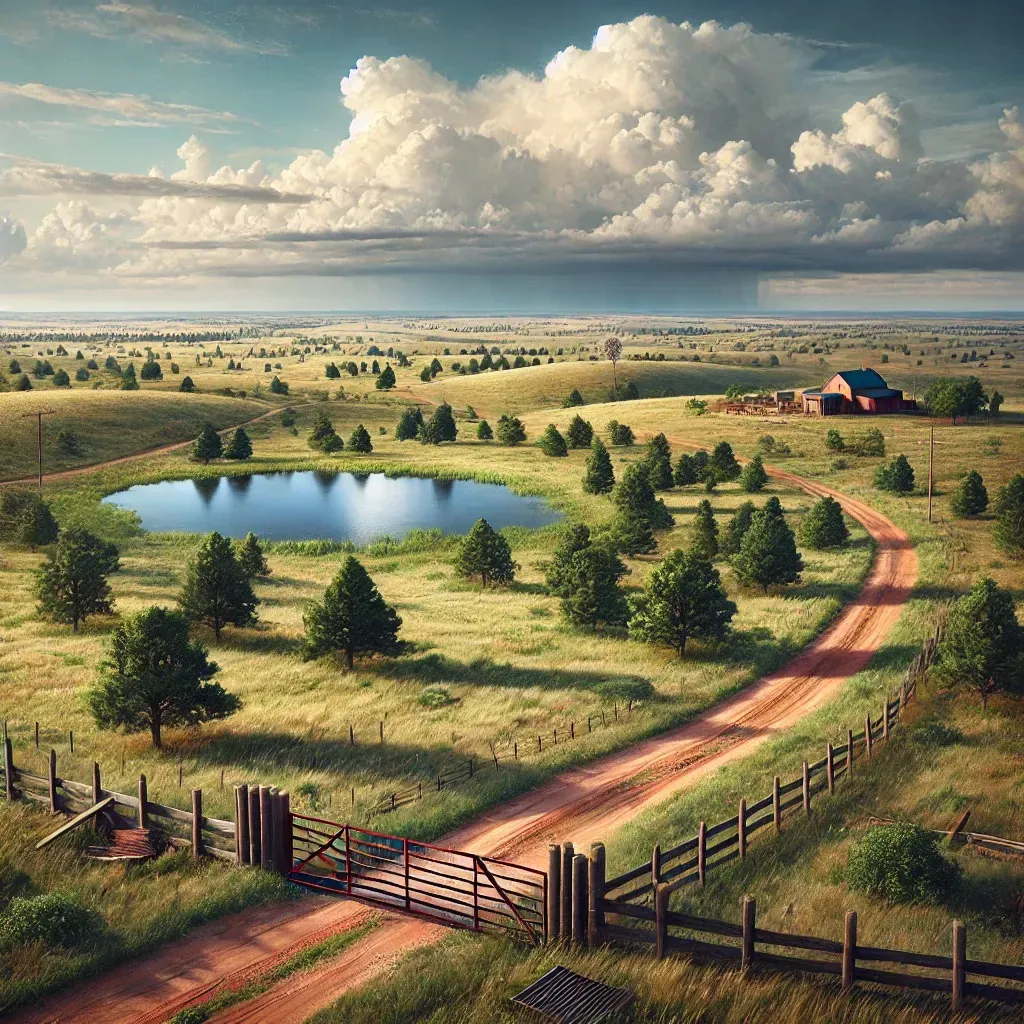
Pros and Cons of Buying Land in Oklahoma
Thinking about buying land in Oklahoma? You're not alone. The Sooner State has seen a surge in its real estate market, with cropland prices increasing by 15% from 2022 to 2023. Oklahoma State University's recent report shows that, on average, an acre of farmland now costs around $2,583. Interestingly, more than half of land buyers in 2023 were looking for investment opportunities, while about one-third intended to put the land to agricultural use. Whether you're seeking vast open spaces or looking to expand your investment portfolio, purchasing land in Oklahoma presents intriguing possibilities. However, like any significant investment, this endeavor requires careful consideration of its pros and cons. Let’s explore what you should keep in mind before claiming your piece of Oklahoma land.
Pros of Buying Land in Oklahoma
1. Affordable Pricing
Oklahoma's land prices are significantly lower than those in states like California or New York. As of 2020, the median price per acre for farm real estate was $2,250, which is substantially lower than neighboring Kansas ($1,750) or Texas ($2,300). Non-agricultural land prices typically range from $2,000 to $10,000 per acre, depending on location and improvements. This affordability allows buyers to consider larger properties or multiple smaller plots.
2. Business-Friendly Tax Structure
Oklahoma offers a favorable tax structure for landowners and investors. The state does not impose property tax on land, only on the value of improvements such as buildings and infrastructure. There’s also no corporate, inventory, or personal income tax, making it advantageous for business operations on land in Oklahoma.
3. Abundant Natural Resources
Oklahoma is rich in natural resources, making its land attractive for industries like agriculture, oil and gas exploration, and mining. Over 34 million acres of farmland yield major crops such as wheat, soybeans, and cotton. Additionally, its cattle industry generates $2 billion in beef production. Mineral rights are also valuable assets, as the state has extensive deposits of petroleum, natural gas, coal, and rare earth elements. This steady industrial presence supports stable land values, even during market fluctuations seen in other states.
4. Recreational Opportunities
From the Great Plains to the stunning Ozark Mountains, Oklahoma's diverse landscapes offer year-round recreational activities. Popular options include hunting, fishing, hiking, kayaking, and camping, which can be enjoyed on both private rural plots and public lands like state parks. Owning property in proximity to the state’s many lakes, rivers, and wildlife preserves enables recreational land use for personal enjoyment or potential rental income.
Cons of Buying Land in Oklahoma
1. Volatility of Commodity Prices
Oklahoma’s reliance on agriculture, oil and gas, and other commodity-driven industries means that market volatility can impact real estate significantly. Sharp declines in crop prices and oil values can stall investment and development opportunities. Researching current conditions and future projections for specific locations is vital to avoid overpaying.
2. Severe Weather Risks
The central plains position of Oklahoma leaves it vulnerable to extreme weather, including ice storms and tornadoes. These severe weather events can damage land and improvements such as buildings and fencing. Prospective buyers should assess the frequency of disaster risks for their locations to gauge overall ownership costs.
3. Rural Decline
The trend towards urbanization and population decreases in rural areas negatively affects small-town real estate markets throughout Oklahoma. Once-thriving farming communities now struggle to maintain essential services, jobs, and infrastructure as younger generations migrate to cities. Deteriorating neighborhoods may pose challenges for community preservation and property values. Therefore, investigating the health of local communities is crucial before making a purchase.
4. Complex Regulations
Oklahoma landowners may encounter a myriad of regulations, including land use constraints, building codes, and water rights policies. Activities such as oil and gas drilling require approvals from various state agencies, while outdated claims related to mineral and water rights can complicate transactions. Comprehensive research into federal, state, and local regulations is essential before committing to a purchase.
Key Factors to Consider When Buying Oklahoma Land
To ensure informed decisions, thorough due diligence is essential. Here are critical considerations:
- Location: Assess how terrain, population density, and proximity to urban areas impact value and intended use.
- Existing Infrastructure: Evaluate what is already present on the land, such as buildings, roads, and fencing.
- Utilities and Access: Investigate easement rights, energy accessibility, and utility connectivity fees.
- Community Attributes: For rural options, look into distance to schools, hospitals, and shopping centers.
- Intended Use: Define your purpose for the land – farming, residential development, recreation, or conservation.
- Market Dynamics: Research comparable sales and trends in property values in the area.
- Regulatory Landscape: Familiarize yourself with land use laws, restrictions, and tax policies.
Conducting thorough market analysis tailored to your target area helps navigate the pros and cons of specific parcels effectively. Localized research will uncover both competitive benchmarks and larger market influences.
Weighing the Pros and Cons
Deciding to buy land in Oklahoma requires weighing benefits against potential drawbacks. Despite market volatility, Oklahoma remains an appealing option for affordable real estate across agriculture, energy, business, and personal use. Understanding the interplay of local community conditions and broader market forces is key to identifying the right parcel that meets your needs and budget.
Mistakes to Avoid When Buying Land in Oklahoma
1. Neglecting Water Rights: Verify water access, as Oklahoma's complex laws may separate water rights from land ownership.
2. Overlooking Easements: Conduct thorough research on potential easements that may restrict land use.
3. Skipping Environmental Assessments: Assess risks of flooding and contamination to avoid unforeseen cleanup costs.
4. Ignoring Oil and Gas Rights: Ensure mineral rights have not been severed from land ownership by investigating property deeds.
Final Thoughts
Purchasing rural property in Oklahoma can lead to varied opportunities, but it’s crucial to engage in comprehensive due diligence. Understanding water rights, access easements, and potential environmental risks is paramount to avoid complications post-purchase. Consulting with local professionals in real estate, law, and land management can further guide you through Oklahoma’s complex property landscape to secure the perfect land to meet your objectives.



